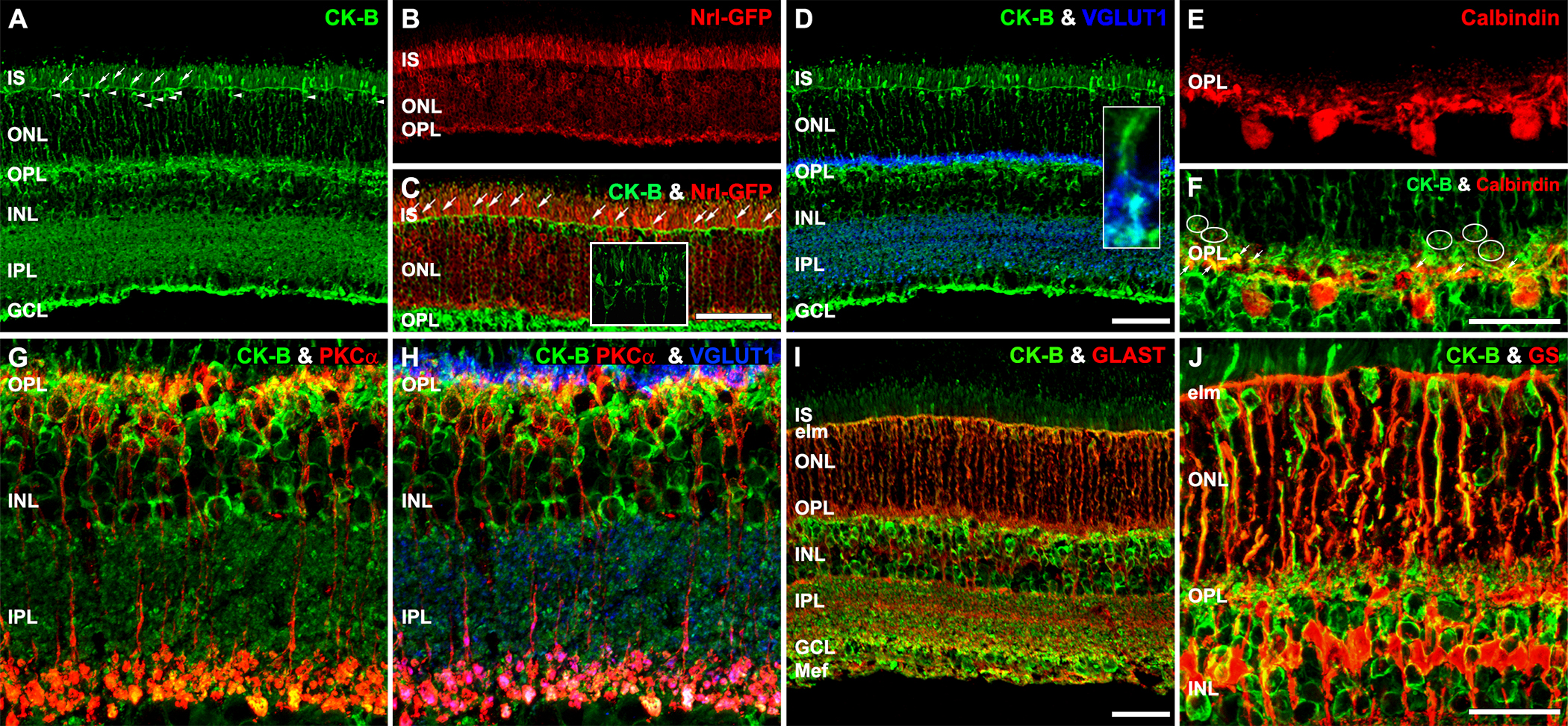Figure 13. Confocal images reveal that the brain-type CK-B is differentially expressed throughout the retina. A: Retinas immunolabeled for creatine kinase isozyme (CK-B) show that the cone ISs (white arrows) and cytoplasm of the cone
somas in the distal ONL (white arrowheads) are intensely labeled. B and C: Retinas of neural retina leucine zipper-green fluorescent protein (Nrl-GFP) transgenic mice pseudocolored in red (B) that were (C) double-labeled for CK-B show that rods minimally express CK-B, while the CK-B-IR cone ISs are visible (white arrows). Insert:
Higher-magnification image of CK-B-IR. D: Retinas double-labeled for CK-B and VGLUT1 reveal colocalization in the OPL (aquamarine pixels). The high-magnification
inset shows colocalization in the presynaptic terminal of a cone pedicle. E and F: High-magnification images of the OPL (E) single-labeled for calbindin, which selectively labels horizontal cells and their processes, and (F) double-labeled for CK-B and calbindin, which colocalized in the horizontal cell dendrites of cone pedicles (white arrows:
yellow-orange pixels) and horizontal cell axon terminals in the rod spherules (inside white stroked circles: pairs of yellow-orange
pixels). G and H: Retinas double-labeled for CK-B and PKCα and/or triple-labeled with VGLUT1 reveal colocalization of CK-B in rod spherules
located in the distal OPL (yellow-orange pixels). I and J: Retinas double-labeled for CK-B either (I) GLAST or (J) GS show colocalization in the ELM, in close apposition to cone axons in the ONL and MGC end-feet. ELM = external limiting
membrane, GCL = ganglion cell layer, GLAST = glutamate-aspartate transporter, GS = glutamine synthetase, INL = inner nuclear
layer, IPL = inner plexiform layer, ISs = inner segments, MGC = Müller glial cell, ONL = outer nuclear layer, OPL = outer
plexiform layer, PKCα = protein kinase C α, VGLUT1 = vesicular glutamate transporter 1. A, B, D, and I, scale bar = 40 µm.
C, scale bar = 30 µm. E–H and J, scale bar = 20 µm.

 Figure 13 of
Rueda, Mol Vis 2016; 22:847-885.
Figure 13 of
Rueda, Mol Vis 2016; 22:847-885.  Figure 13 of
Rueda, Mol Vis 2016; 22:847-885.
Figure 13 of
Rueda, Mol Vis 2016; 22:847-885. 